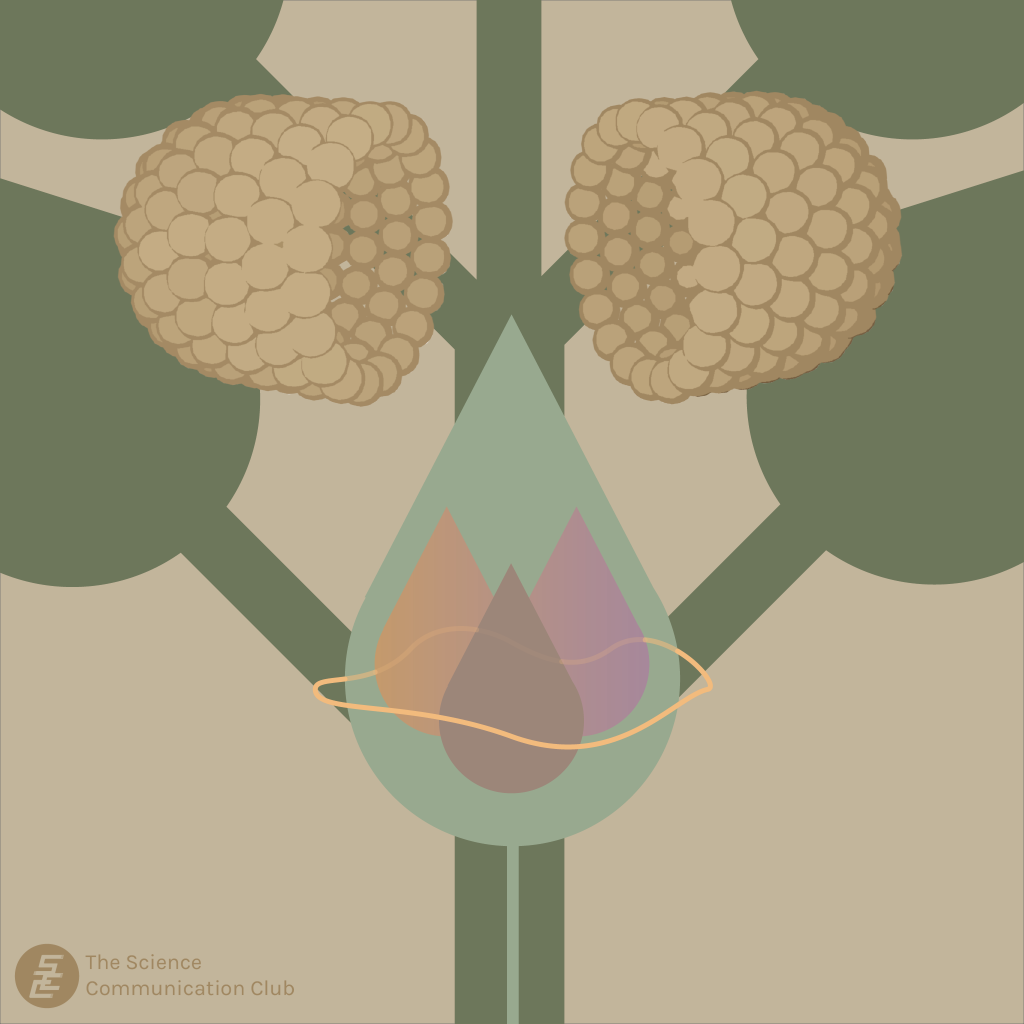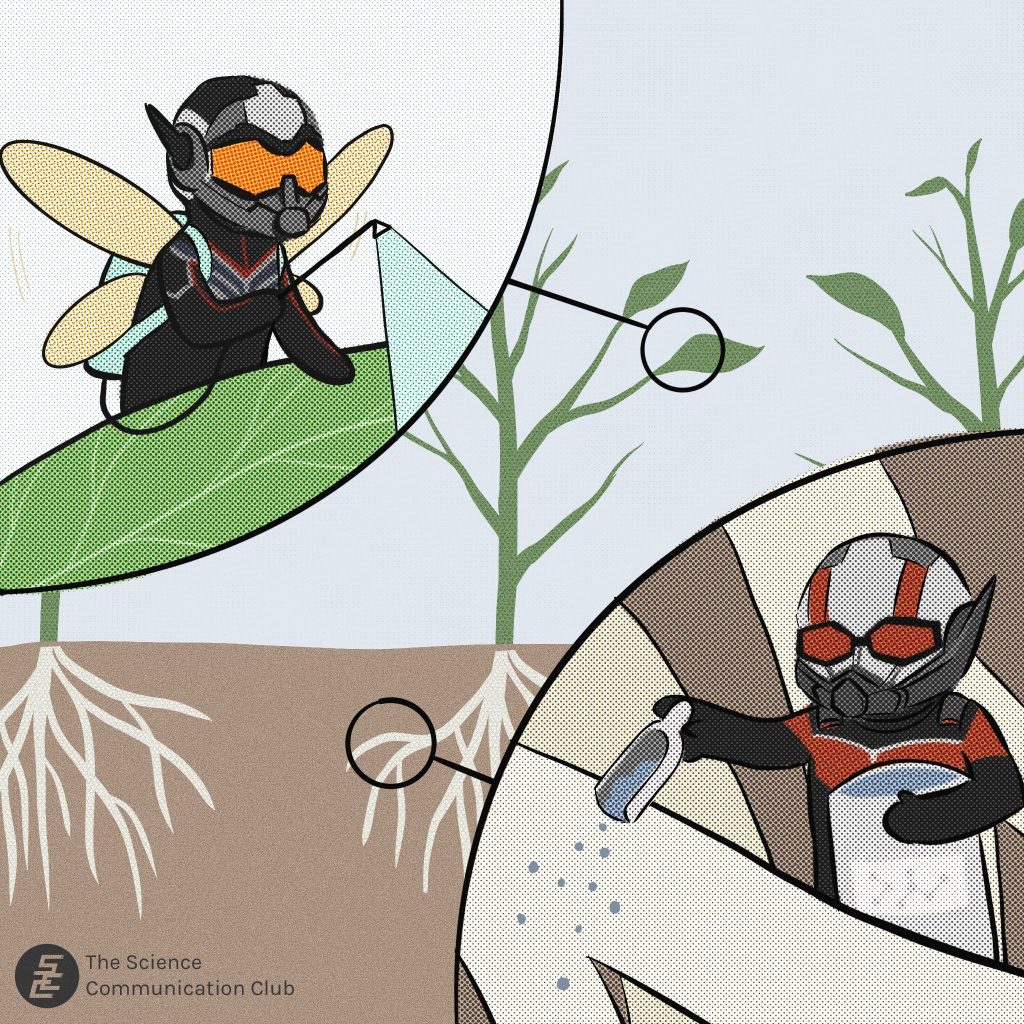
Written by Elakkiya Prabaharan
Illustrated by Ziyan Chen
The world’s population is projected to hit nine billion people by 2050 (Wolchover, 2011). To feed everyone, we would need to double the number of crops currently growing around the world (Foley, n.d.). Unfortunately, agriculture is one of the greatest contributors to global warming, and its environmental impact will only grow as the demand for food increases.
One of the biggest environmental challenges we will face during the global food crisis is the outcome of increased fertilizer and pesticide use. While pesticides are necessary to achieve high crop yields, they negatively impact the environment by killing beneficial insect species (Goh, 2021). Furthermore, soil and water contamination by fertilizers and pesticides is widespread, and you can find run-off contaminants everywhere on Earth (Aktar, 2009)!
Pesticides and insecticides are also becoming less effective over time as their target species become less susceptible to the toxins. As a result, we will need to replace currently used insecticides with newer, harsher chemicals, whose toxins accumulate in the environment (Nowicki, 2021).
Curbing pesticide use in the agriculture sector could be a very nuanced challenge. The most common way to deliver pesticides to plants is to spray their leaves. But spraying pesticides is an inefficient method of delivery because pesticide chemicals do not mix well with water, requiring vast quantities of liquid to spray enough pesticide for the chemical to be effective (Goh, 2021). One of the more creative solutions that has emerged is the use of nanotechnology. Nanoscience is the study of matter at a microscopic scale, and nanotechnology is an innovative field that develops objects that are almost atomic in size. Nanotech can prevent the excessive use of pesticides and water in agriculture by delivering chemicals directly to the parts of the plant where they are needed most: the roots and the leaves. Thus, nanoscale delivery systems enhance crop yield and protect crops from pests without wasting water and chemical products! This new way of cultivation is called precision farming, and its overall goal is to increase the output of farms while preserving their resources, such as soil and water.
The encapsulation technique is a common way to deliver nano pesticides and fertilizers to precise locations on a plant in a timely manner. The pesticide or fertilizer is coated in a capsule of nanomaterials and is released slowly over time. Releasing chemicals in this way allows plants to absorb them more efficiently and reduces pesticide run-off (Duhan, 2017). This technique is similar to administering medication in pills or capsules, except on a much smaller scale (Goh, 2021).

There are many Canadian corporations at the forefront of nanotech development in the agriculture industry. University of Toronto professor Cynthia Goh co-founded Vive Crop Protection with her previous Ph.D. students, including the company’s current CEO, Darren Anderson (Goh, 2021). Vive’s primary nanotech product is the Allosphere Delivery System, which uses “nanopackets” (or tiny polymer shuttles) to directly deliver the active ingredients of fertilizers and herbicides to roots and leaves without depositing any into the soil (Vive, 2021).
For something so small, nanotech opens a world of possibilities to improve the way we cultivate crops. It will be a crucial tool to fight climate change brought on by the expansion of the agriculture industry. Nanoscience is an economical and environmentally sound strategy to grow more crops on farmland we already have, eliminating the need to use more space while feeding more people in the decades to come.
Sources:
- Aktar, W., Sengupta, D., & Chowdhury, A. (2009, March). Impact of pesticides use in agriculture: Their benefits and Hazards. Interdisciplinary toxicology. Retrieved October 7, 2021, from https://www.ncbi.nlm.nih.gov/pmc/articles/PMC2984095/.
- Duhan, J. S., Kumar, R., Kumar, N., Kaur, P., Nehra, K., & Duhan, S. (2017, May 24). Nanotechnology: The New Perspective in Precision Agriculture. Biotechnology Reports. Retrieved October 7, 2021, from https://www.sciencedirect.com/science/article/pii/S2215017X16301400.
- Foley, J. (2021). A five-step plan to feed the world. Feeding 9 Billion – National Geographic. Retrieved October 7, 2021, from https://www.nationalgeographic.com/foodfeatures/feeding-9-billion/.
- Goh, C. (2021, April 25). Tiny nanotechnologies are poised to have a huge impact on agriculture. The Conversation. Retrieved October 7, 2021, from https://theconversation.com/tiny-nanotechnologies-are-poised-to-have-a-huge-impact-on-agriculture-157839.
- Nowicki, P., Kuczer, M., Schroeder, G., & Czarniewska, E. (2021, May 4). Disruption of insect immunity using analogs of the pleiotropic insect peptide hormone NEB-colloostatin: A nanotech approach for Pest Control II. Nature News. Retrieved October 7, 2021, from https://www.nature.com/articles/s41598-021-87878-5.
- Technology. Vive Crop Protection. (2021, January 25). Retrieved October 7, 2021, from https://www.vivecrop.com/technology/.
- Wolchover, N. (2011, October 11). How many people can earth support? LiveScience. Retrieved October 7, 2021, from https://www.livescience.com/16493-people-planet-earth-support.html.
- What is nanotechnology? | national nanotechnology initiative. (n.d.). Retrieved October 7, 2021, from https://www.nano.gov/nanotech-101/what/definition.